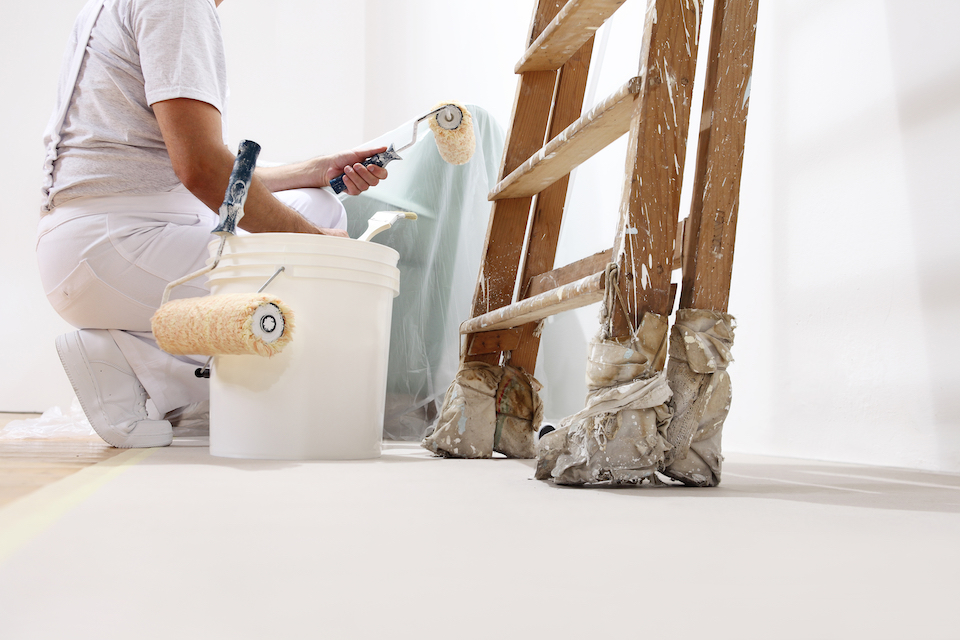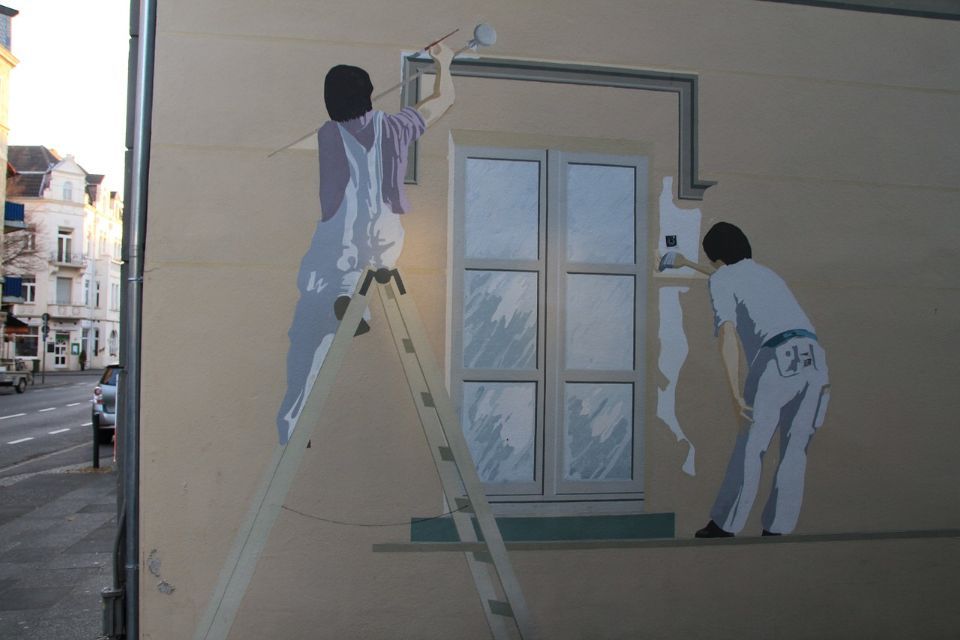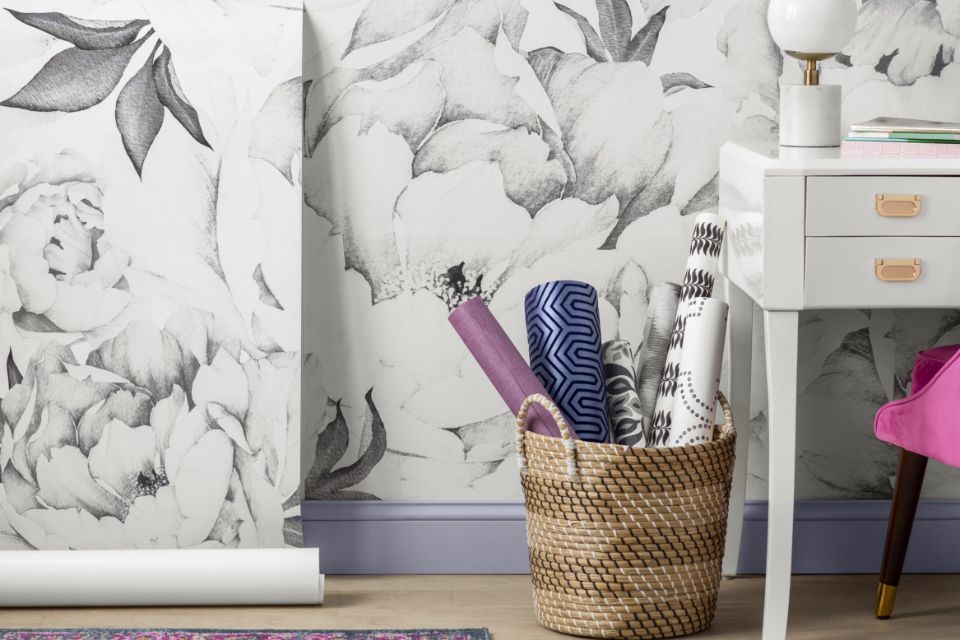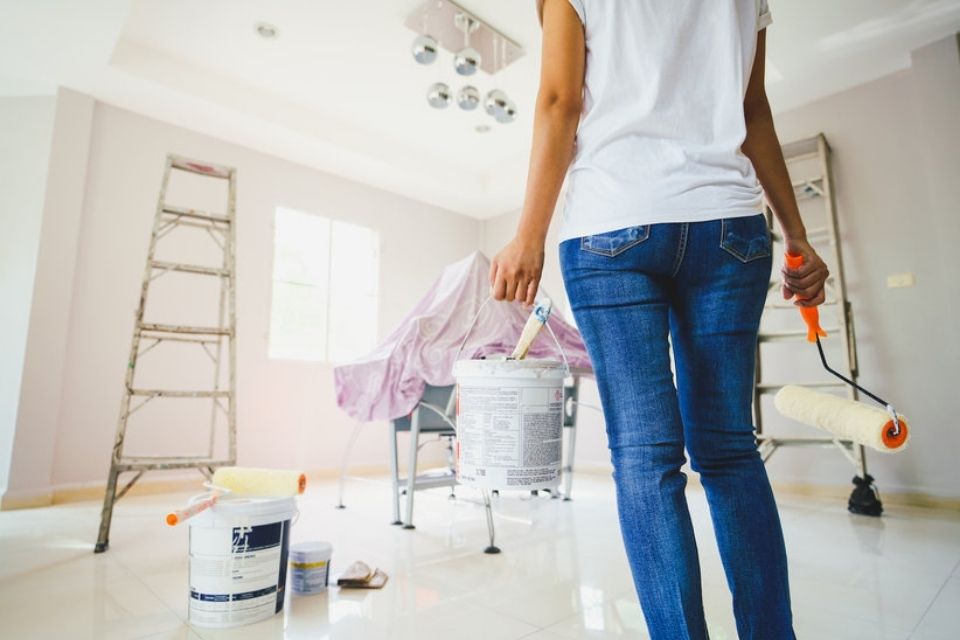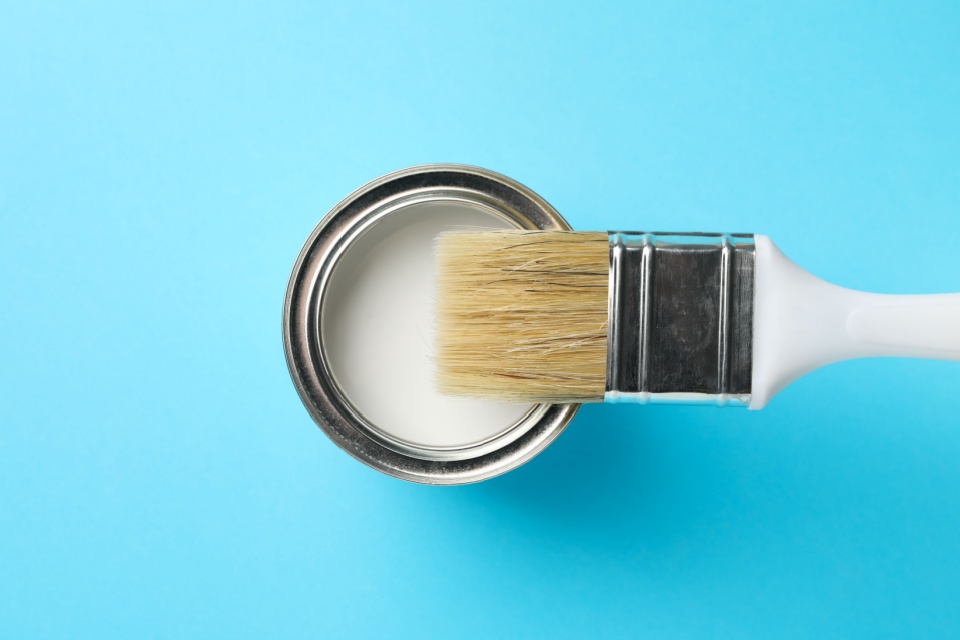How Much Does a Painter and Decorator Cost in 2024?
We've created this pricing guide to give you a clear idea of what average painter and decorator charges to expect in the UK.
If you want to leave painting and decorating to the pros, then this is the guide for you!
Painting and decorating prices are impacted by the size of the room, the type (and quality) of the paint you want, whether the walls or ceiling require additional work, and your location in the UK.
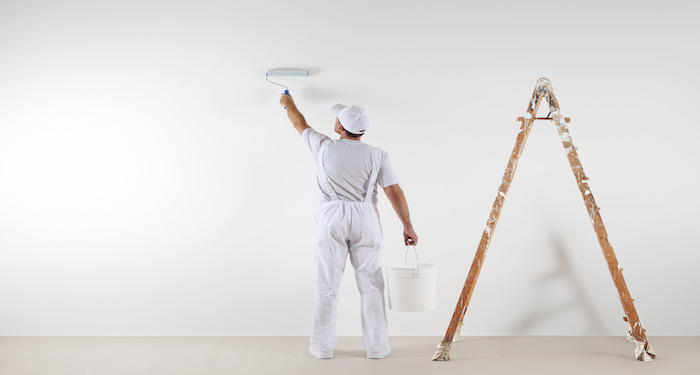
So, how much does a painter and decorator charge per day in the UK?
Due to the nature of painting and decorating projects, the typical costs can vary dramatically.
Painting and decorating costs, on average, are roughly £160 - £200 per day, with pricing in London likely to be a touch more.
A fresh coat of paint is a quick and easy method to refresh your home with a new look and feel.
However, painting the walls and ceiling of a modest room that's around 5m² will cost roughly £200 - £250 and take no more than one day.
A large room that's around 30m² will cost between £400 - £450 and won't usually take more than 2 days to complete.
Asking a professional painter about usual painter and decorator prices is an excellent place to start.
The average cost to paint a 1-bedroom flat would be around £700 - £800. A 2-bedroom flat typically costs £900 - £1,000 to get painted by an experienced tradesperson.
The cost to paint a 3-bedroom house is typically between £1,100 - £1,150. On average, a 4-bedroom semi-detached house costs around £1,200 - £1,250 and a 5-bedroom detached house cost £1,300 - £1,500 to get painted by a professional.
Don't forget! The size of the room also influences the painting and decorating prices you're quoted.
This is due to the number of materials needed. Expect to pay between £200 - £300 for a small room, around £250 - £400 for a medium-sized room, and approximately £400 - £650 for a large-sized room.
However, different jobs will affect the cost due to the ease of access or the job involved. Wallpapering a room costs between £250 - £500 and repainting a hallway and stairs costs about £450 - £650.
If you're looking to get a more accurate price for your painting or decorating job, we can help connect you with local tradespeople.
Painter and Decorator Prices
A far more thorough list of typical examples can be seen in the table below.
Although your home is unlikely to be the same size as these, you can use the dimensions to compare them to your own.
You may then estimate the cost of painting and decorating your home, as well as the time it will take to complete the work. Remember that these prices do not include VAT and will vary depending on several factors — including your location in the country.
| Job | Cost |
|---|---|
| Walls and ceiling of a modest room (about 5m²) | £200 - £250 |
| A large room (about 30m²) | £400 - £450 |
| 1-bedroom flat | £700 - £800 |
| 2-bedroom flat | £900 - £1,000 |
| 3-bedroom house | £1,100 - £1,150 |
| 4-bedroom semi-detached house | £1,200 - £1,250 |
| 5-bedroom detached house | £1,300 - £1,500 |
| Small room | £200 - £300 |
| Medium room | £250 - £400 |
| Large room | £400 - £650 |
| Wallpaper a room | £250 - £500 |
| Repaint hallway and stairs | £450 - £650 |
Prices in different areas of the UK could be higher to hire a painter and decorator than others. For instance, the painter and decorator costs in London are higher than in other cities due to the increased cost of living.
- How Much Does a Painter and Decorator Cost in 2024?
- What Are the Costs of Painter and Decorator Supplies?
- What Additional Painting and Decorating Costs Are There?
- How Much Does a Painter and Decorator Charge in the UK?
- How Long Do Painter and Decorator Jobs Take?
- How Much Do Different Painting and Decorator Jobs Cost?
- FAQs
- Sources
What Are the Costs of Painter and Decorator Supplies?
If you are looking to DIY a painting and decorating job, then this part of the article will show you what tools and materials you will need to complete the job, whether it's painting or wallpapering your home.
Here you will find all the tools and materials you will need without any labour or additional costs included.
When it comes to the tools, all house painters and decorators must use a paintbrush, which usually costs about £7 - £30. A paint roller can cost £15 - £30 for a good quality paint roller, and a paint tray can cost £3 - £7.
You will also need dust sheets to prevent any paint from going on the floor. These usually cost around £10 - £30. Masking tape to stop it going on the skirting boards costs £5 - £9 and sandpaper costs £3 - £15. A step ladder costs £30 - £60 and filler (if needed) costs £6 - £18.
If you are wallpapering, you will need a wallpaper scraper which costs £6 - £10. A wallpaper pasting table costs £9 – 20, a wallpaper pasting brush will cost £5 - £8, you will also need to buy a bucket which cost £3 - £5, and you will need a wallpaper roller which cost £5 - £9.
Basic wallpaper usually costs £16 - £160 per roll; however, depending on the type of design and the type of wallpaper you are using, this will affect the cost.
Most of the time, it is best to purchase your wallpaper anyway, as you can choose the one you like. Wallpaper paste will usually cost £3 - £16. If you're using a steamer to remove old wallpaper, expect a lot of dampness.
A steamer costs between £25 – £45. It can be a good idea to relocate items like your sofa to the centre of the room and cover them to prevent them from getting damp.
For interior wall paint, expect to pay £1 - £20 per litre. For gloss paint, it will cost £6 - £27 per litre, satin paint costs £2 - £22 per litre.
Kitchen cupboard paint usually costs £16 - £46 per litre. Then for internal cladding, expect to pay £13 - £23 per m².
The table below will show the supply costs for painting and decorating jobs without any labour or additional costs.
| Tools/Materials | Average Cost |
|---|---|
| Paintbrush | £7 - £30 |
| Paint roller | £15 - £30 |
| Paint tray | £3 - £7 |
| Dust sheets | £10 - £30 |
| Masking tape | £5 - £9 |
| Sandpaper | £3 - £15 |
| Step ladder | £30 - £60 |
| Filter | £6 - £18. |
| Wallpaper scraper | £6 - £10 |
| Wallpaper paste | £3 - £16 |
| Wallpaper pasting table | £9 – 20 |
| Wallpaper pasting brush | £5 - £8 |
| Bucket | £3 - £5 |
| Wallpaper roller | £5 - £9 |
| Wallpaper | £16 - £160 |
| Steamer | £25 -£45 |
| Interior wall paint | £1 – £20 per litre |
| Gloss paint | £6 - £27 per litre |
| Satin paint | £2 - £22 per litre |
| Kitchen cupboard paint | £16 - £46 per litre |
What Additional Painting and Decorating Costs Are There?
When having a painter and decorator come in and do work in our home, you may have to pay for additional costs if you want other work done in your home.
Here we will go through the additional costs of painting and decorating so you know what you expect when hiring a painter and decorator.
New Flooring
When you have had your rooms painted or decorated, you might want to change the vibe of the whole room and install new flooring. But how much does it cost?
The average cost of flooring installation is between £400 - £1,000 in most cases. The cost of new flooring will vary depending on the type of flooring you choose and the size of the room.
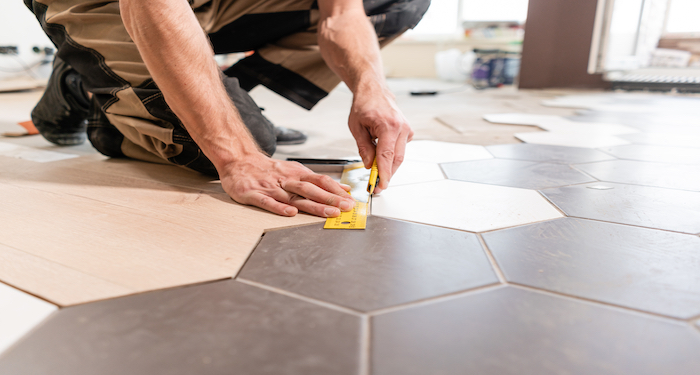
The price of labour is one of the most essential things to consider, as floor installers will charge varying prices for different types of flooring. Tradesmen costs will vary from £40 - £500 depending on the size and type of carpet you want to install in your home.
Depending on the type and size to install new flooring in your home could take between 3 hours – 4 days.
Wall & Ceiling Plastering
Before you start painting or wallpapering, make sure your walls are well primed and plastered. This will protect and prime your walls, which is especially important if you have any wet spots that need to be replastered.
The cost will vary depending on how much wall space needs to be covered, but experienced plasterers typically charge around £200 for a small ceiling and up to £730 for a large ceiling.
Replastering a small room can set you back roughly £400 – £500, while new plastering would set you back around £600 – £700. Replastering a large living room will cost between £550 – £700, while a brand-new plastering work will cost between £1,000 – £1,400.
Please refer to our guide on the costs of plastering, for further information.
Artex Removal
Before having your ceiling or room painted, you may want to have Artex removed from your ceiling. Artex removal might cost between £400 – £1,950.
A typical tradesman may charge between £150 – £250 per day for each labourer. This implies that if the job is exceptionally difficult due to the size or layout of your rooms, they may need to operate as a two-person team instead of just one.
However, after the contractors have given you a quote for the task, all will be evident.
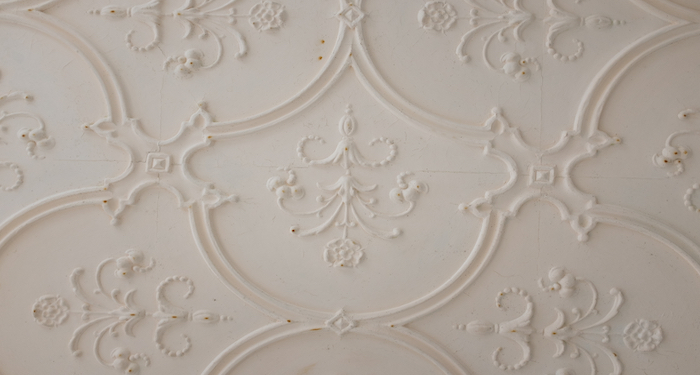
A tiny box room will take a few hours to a day to clean, but a whole house can take considerably longer, up to a week. Of course, this will have an impact on the price, and the contractor will be able to give you a better understanding of this when pricing.
Another aspect that affects the amount of time it takes is the state of the Artex, as it's much easier to remove Artex that has already started to crack, flake, and show signs of wear.
Cleaning up after Artex removal can take a long time because the room might become dusty and untidy, which the contractor wants to have removed completely, and all Artex bagged away before leaving.
Please refer to our guide on the costs of removing artex.
New Lighting
You may need to remove your lighting fixtures before painting or wallpapering your walls, and you can either reinstall them or replace them with new lights.
The cost of new lighting will vary based on the amount of illumination you require and the amount of space available in your room. A basic fitting can cost roughly £60 to install, while new lights and wiring can cost up to £1,000.
Installing a ceiling light in your living room or bedroom can cost anything from £6 for a simple flush mount light to £2000 or more for a chandelier if you're remodelling.
If you want to update your kitchen lighting, consider hanging pendant lights over your kitchen cabinet, which typically cost between £30 – £500 per light.
Consider installing spotlights in your bathroom while redesigning to bring out the beauty of your tiles and wall coverings. Bathroom spotlights often range in price from £15 – £250.
Damp Walls or Stained Ceilings
If you've only budgeted for painting, you can be in for a rude awakening when the painter tells you how much more work they need to do.
Damp areas, for example, can't simply be painted over with the final colour. To guarantee the moisture doesn't break through the paint within a few months of application, the areas will need to be sealed first.
Similarly, ceilings stained with nicotine will need a sugar soap wash before painting, and any peeling gloss on woodwork will necessitate a 'burn off'. These will take more time and cost more money.
Wallpaper Removal
If you need to remove wallpaper, it's better to do it yourself. Unlike many other areas of decorating, removing old paper requires no skills and can be done by a novice.
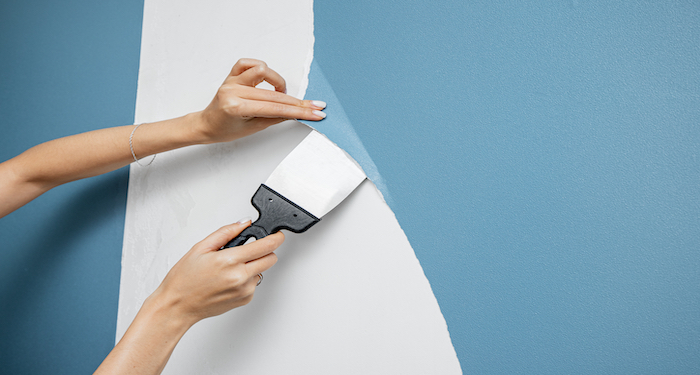
This can reveal hidden problems with your walls before your workers come, which can produce more benefits than the slightly lower labour expenses. The last thing you need is to have your decorators halfway through a task and then realise that an entire room needs replastering.
This is a good technique to ensure the lifespan of your paintwork if you do it ahead of time. It's a chore that can stymie your decorators, but it can't be ignored.
Removing stubborn wallpaper may be difficult and time-consuming, so hiring a professional can save you a lot of time and effort. Wallpaper removal costs between £300 – £350 on average.
How Much Does a Painter and Decorator Charge in the UK?
Cutting in, covering up damp, and attaining a consistent finish isn't always as simple as slapping a layer of paint on a wall. Because most of your painting and decorating quote will be for labour, pricing will vary greatly depending on individual skill levels.
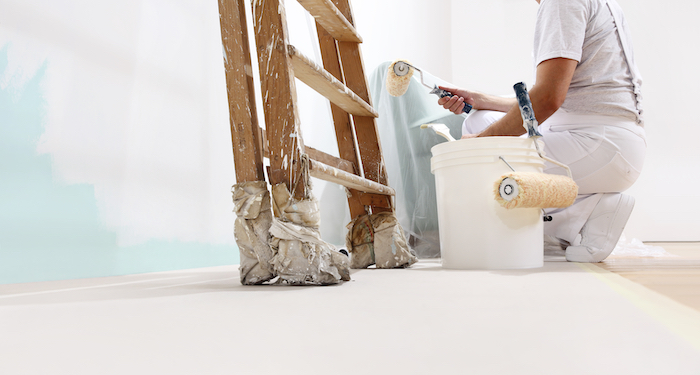
Lower-skilled painters and decorators may be less expensive. However, they will take longer and may not provide the same level of service as an industry specialist who has years of experience. There's also the mess to consider. Reputable decorators are more likely to leave a property in the same condition as they found it rather than leaving you to cope with any mess.
Here we will discuss the different labour costs of painter and decorator jobs without any supply or additional costs included.
In the United Kingdom, the average painter and decorator wage is between £27,000 – £28,000 per year, or £14 - £17 per hour.
Starting salaries for entry-level employment start at £24,000 per year, with the highest-paid professionals earning up to £32,000 - £33,000 per year.
For significant decorating works such as painting or wallpapering many rooms, a usual quote for hiring a painter and decorator is from £100 – £300 per day.
However, different areas of the UK may charge extra than others for labour costs. A painter and decorator in London might charge between £40 – £48 per hour.
Although most painters and decorators outside of London do not charge as much, much of the southeast of England is relatively expensive. The hourly rate in Newcastle is likely to be between £10 – £15 per hour.
How Long Do Painter and Decorator Jobs Take?
Knowing how long jobs will be completed in your home is a massive factor as sometimes you might have to move out for a couple of days. Also, most tradesmen charge for their time.
Knowing how long a task will take to establish the ultimate pricing is also vital. Here we have created a section to tell you all about the timescales of painting and decorating jobs.
A 15m² surface will take 1 – 2 days to paint. Expect a 30m² area to take 2 – 3 days to paint in total and a 60m² area to take 6 - 7 days.
If you're only having a box bedroom painted, it should only take a day to finish; but, if you need any wallpaper or paint removed, you'll need to add another day. If you want the tradesman to remove and replace any furniture, the job could take 3 - 4 days.
It can take 5 - 6 days to redecorate a two-bedroom terraced house, 7 – 9 days to redecorate a three-bedroom semi-detached property, and up to 10 - 14 days to redecorate a five-bedroom detached house.
Painting kitchen cabinets, for example, can take as little as 2 - 3 days for a small kitchen and up to 5 – 6 days for a large kitchen. Other chores, such as painting skirting boards, can take one to two days, whereas painting a door frame can take as little as three to five hours.
Wallpaper installation takes 3 - 6 hours for a 10m² room, 7 - 10 hours for a 20m² room, 1 - 2 days for a 30m² room, and 2 - 3 days for a 50m² room on average.
Expect to spend 7 - 10 hours stripping and hanging wallpaper in a 10m² room, two days in a 20m² room, 2 - 3 days in a 30m² room, and roughly three days in a 50m² room.
Accessibility, whether any additional work is required, and whether the work is done by a professional or as a do-it-yourself project are all factors that determine the amount of time it takes. If you wanted the room's woodwork painted as well, it might take an extra day or two.
| Job | Timescale |
|---|---|
| Paint a 15m² area | 1 – 2 days |
| Paint a 30m² area | 2 – 3 days |
| Paint a 60m² area | 6 – 7 days |
| Paint a box room | One day |
| Paint or wallpaper removal | One day |
| Tradesman to remove and replace any furniture | 3 – 4 days |
| Decorate a two-bedroom house | 5 – 6 days |
| Decorate a three-bedroom semi-detached house | 7 – 9 days |
| Decorate a five-bedroom detached house | 10 – 14 days |
| Painting kitchen cabinets | 2 – 3 days |
| Large kitchen | 5 – 6 days |
| Wallpapering a 10m² room | 3 – 6 hours |
| Wallpapering a 20m² room | 7 – 10 hours |
| Wallpapering a 30m² room | 1 – 2 days |
| Wallpapering a 50m² room | 2 – 3 days |
| Stripping and hanging wallpaper | 7 – 10 hours |
How Much Do Different Painting and Decorator Jobs Cost?
Painters and decorators have plenty of jobs that must be skilful to complete. Here we will break down the jobs that painters and decorators do and include the price and the duration of the job.
Painter Cost
Hiring a painter would allow you to spend the time you would have spent on DIY activities you like. You may reclaim that time, move on with your life, and return home to a beautiful-looking space by hiring a professional.
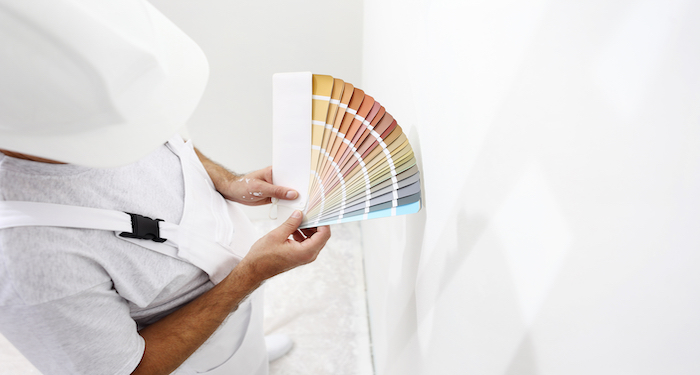
A modest 10m² surface area would cost around £180 – £190 to paint, a 15m² area would cost £260 – £270 to paint, and a bigger 30m² wall area would cost around £520 – £530 to paint.
Painting a huge surface area of 60m² would cost between £1,000 – £1,020 in total. Single wall paint can cost anywhere between £65 – £265, depending on the size.
Some paint materials are more expensive than others, and various walls may require different techniques based on their characteristics. The longer the job takes, the more money it will cost, particularly in terms of labour costs.
Furthermore, the number of tradespeople and level of access can influence the overall charge. Most likely, you'll hire just one painter, but if the work is enormous, hiring a second labourer could save you time. This, however, would quadruple your hourly labour costs.
The time it takes to paint a 10m² wall space will vary greatly based on a variety of factors, but all other things being equal, it should take one working day or less. A 15m² surface will take one to two days to paint. Expect a 30m² area to take three days to paint in total and a 60m² area to take six days.
Accessibility, whether any additional work is required, and whether the work is done by a professional or as a do-it-yourself project are all factors that determine the amount of time it takes. If you wanted the room's woodwork painted as well, it might take an extra day or two.
Wallpapering Cost
Because wallpaper installation is such a difficult project to attempt on your own, it's best to hire someone to do it for you. There are many different wallpaper alternatives to pick from, each with its average price.
Lining paper, for example, costs between £2 – £4 per roll, but polystyrene sheeting costs between £5 – £10 per roll.
When it comes to decorating your home, it's very likely to be a one-person task. However, a room/house may be wallpapered by two or more designers in various situations.
If the room being decorated is unusually large or if numerous rooms are getting new wallpaper, the latter scenario may apply. Having two or three labourers on the job will reduce the time it takes to complete the task while increasing the hourly/daily rate.
It's difficult to predict whether this would boost your overall bill because it would rely on how well the labourers collaborate.
Wallpaper installation takes 3 - 6 hours for a 10m² room, 7 - 10 hours for a 20m² room, 1 - 2 days for a 30m² room, and 2 - 3 days for a 50m² room on average.
Expect to spend 7 - 10 hours stripping and hanging wallpaper in a 10m² room, two days in a 20m² room, 2 - 3 days in a 30m² room, and roughly three days in a 50m² room.
The length of time it takes to hang wallpaper or strip and hang wallpaper is determined by the ease of access, the number of decorators on the job, the type of wallpaper used, and whether any further work is required.
Exterior Painting Cost
Painters and decorators don’t just work inside your home. They also do the exterior of your home to give it that extra aesthetic look.
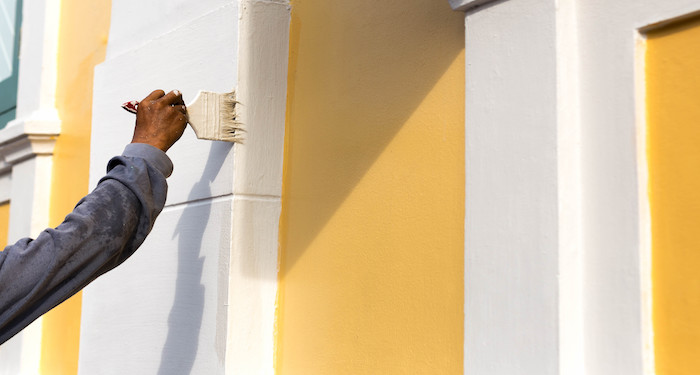
The cost of exterior painting varies based on the scope of the project. Render painting, for example, can cost anywhere between £600 – £1200, while painting the outside of a house can cost anything between £500 – £1500.
You may wish to have your soffits and fascias painted to improve the look of your exterior, which costs from £700 – £1100, and your external windows painted for roughly £200 – £400.
The length of an external paint job is also significant because tradespeople charge by the hour, so the larger the project, the longer it will take and the more it will cost.
If you want to hire someone to paint your home's smooth exterior walls, it should take 3 to 5 days for a terraced house and 4 to 5 days for a semi-detached or detached house.
If you have pebble dash walls, the time frame will likely rise. For example, terraced residences would take 5 to 6 days to paint, while semi-detached and detached homes would take 7 to 9 days.
FAQs
Q: How much value does redecorating add to the value of a house?
A: Redecorating is one of the most popular types of home improvements in the UK.
While redecorating might not directly add a significant amount to the value of a property in the UK, it's a quick and affordable home improvement that can help freshen up your home and make it stand out from similar houses on the market at the same time.
This might lead to higher offers from buyers who want to buy a property that requires no work before moving in, or help your home appeal to a broader selection of people (which increases demand and puts you in a better position when negotiating).
Q: What qualifications do a painter and decorator need?
A: Working as a painter and decorator for a house building firm, a property development company, or as part of a small business, repairing and renovating properties could all be possible with a Level 2 Technical Certificate in Painting and Decorating.
It could potentially lead to a painting and decorating apprenticeship.
Q: What tools does a painter or decorator use?
A: Here's a list of the tools that a decorator will need:
- Paintbrushes
- Rollers for painting.
- Tray for painting.
- Sheets for dusting.
- Tape for masking/decorating.
- Ladder with steps.
- Filling knife and filler
- Sandpaper
Q: What skills or qualities does a painter or decorator need to have?
A: Below is a list of desirable skills and qualities of a successful painter or decorator:
- Paint and other coating product qualities for interior and external applications are known.
- Painting tools require manual abilities.
- Paint application skills are extremely well-versed.
- Form and colour perception.
- Physical stamina and strength.
Q: Do painters and decorators need insurance?
A: Self-employed local painter and decorator specialists need insurance.
This form of insurance will protect you (and members of the public) in the event of an accident or injury, whether you specialise in painting exteriors or interiors, gloss, or feature walls.
You require Public Liability Insurance to protect yourself from legal liability arising from property damage or bodily harm to a third party caused by your work.
Q: What does a painter and decorator do?
A: Painters and decorators work on the interior and exterior surfaces of buildings and other structures, applying paint, wallpaper, and other finishes. Construction businesses, painting contractors, and building maintenance departments employ them, or they may work for themselves.

